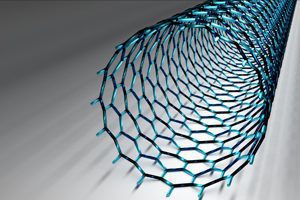
Nanotubes Pose Similar Health Risks As Asbestos. It seems as if Nanotubes may pose similar health risks as asbestos. Discovered in 1991, Nanotubes are basically rolled-up carbon sheets—tiny, super-strong carbon fibers—used to produce materials much lighter and stronger than steel. Nanotubes are found in a variety of common products, such as tennis rackets. Scientists have […]

Nanotubes Pose Similar Health Risks As Asbestos. It seems as if Nanotubes may pose similar health risks as asbestos. Discovered in 1991, Nanotubes are basically rolled-up carbon sheets—tiny, super-strong carbon fibers—used to produce materials much lighter and stronger than steel. Nanotubes are found in a variety of common products, such as tennis rackets.
Scientists have long wondered whether needle-shaped Nanotube might cause similar diseases to those caused by needle-shaped asbestos fibers. Breathing high levels of asbestos fibers is linked to increased risks of lung cancer, mesothelioma—a cancer of the lining of the chest and abdominal cavity—and asbestosis—in which lungs become scarred with fibrous tissue.
A team of researchers reported in an article published on the Website of the journal Nature Nanotechnology that injecting Nanotubes into the abdomens of mice induced lesions similar to those that appear on the outer lining of the lungs after asbestos inhalation. With asbestos, the lesions eventually become mesothelioma. Researchers injected four groups: One with short Nanotube, five microns long; one with long Nanotubes, about 20 microns long; one with asbestos; and one with small carbon clumps. Those injected with short Nanotube or small carbon clumps did not develop disease; those injected with long Nanotubes or asbestos developed lesions on the tissue lining. Ken Donaldson, a professor of respiratory toxicology at the University of Edinburgh in Scotland and one of the authors of the Nature Nanotechnology article, felt certain that, in time, the lesions caused by the long Nanotubes would have developed into mesothelioma.
When foreign particles, such as smoke or dust enter the lungs, macrophages cells surround and remove them. In asbestos, some fibers are too long for the macrophages, thus the lesions. The researchers theorized that long Nanotubes would cause similar problems. The researchers did not analyze how easily Nanotubes become airborne or if Nanotube can lodge in the lungs when inhaled and indicated additional research was needed to determine the extent of such risks. Vince Castranova, chief of the pathology and physiology research branch of the National Institute for Occupational Safety and Health, in Morgantown, West Virginia, said that while the study was “very well done, so far, we haven’t done the studies long enough to determine the long-term pathology.”
Those currently believed to be in the most serious danger would work in laboratories or at Nanotube manufacturers. “I think there is clear evidence for caution in how they are used and handled,” said Andrew D. Maynard, chief science adviser to the Project on Emerging Nanotechnologies at the Woodrow Wilson International Center for Scholars in Washington and another author of the Nature Nanotechnology paper. Maynard feels Nanotube should be subject to the same rules and regulations as asbestos adding, “That gives you a good baseline starting point. The rules could be relaxed if Nanotubes turned out to be less toxic.”
While experts believe consumers would probably not be able to inhale Nanotubes embedded in a golf club or bicycle frame, Maynard said there is concern that Nanotube in products could be released later, in much the same way as asbestos in concrete or automobile brake pads was inhaled by construction workers or mechanics.
The personal injury attorneys at Parker Waichman LLP offer free, no-obligation case evaluations. For more information, fill out our online contact form or call 1-800-YOURLAWYER (1-800-968-7529).


